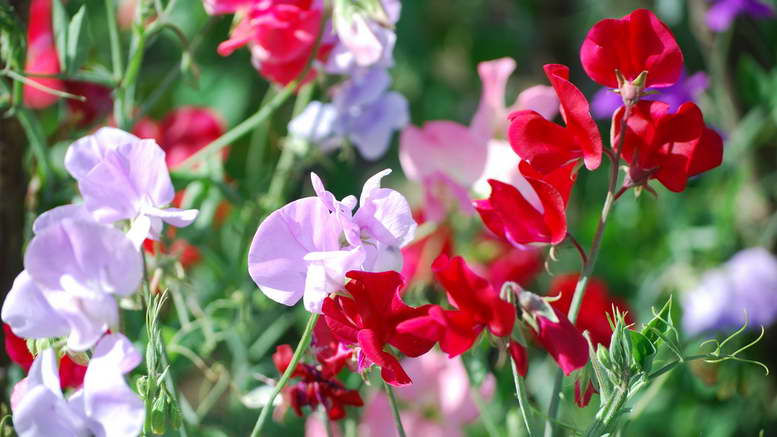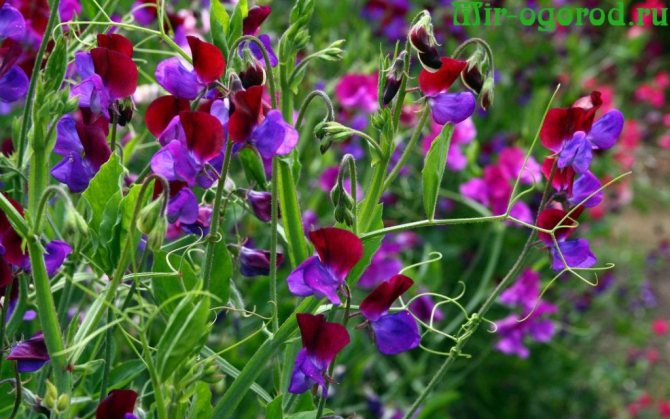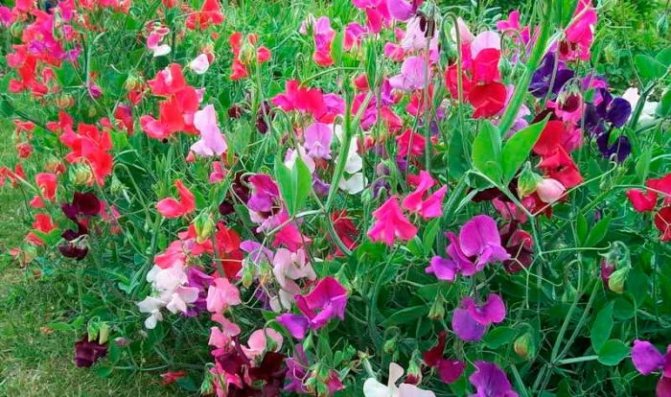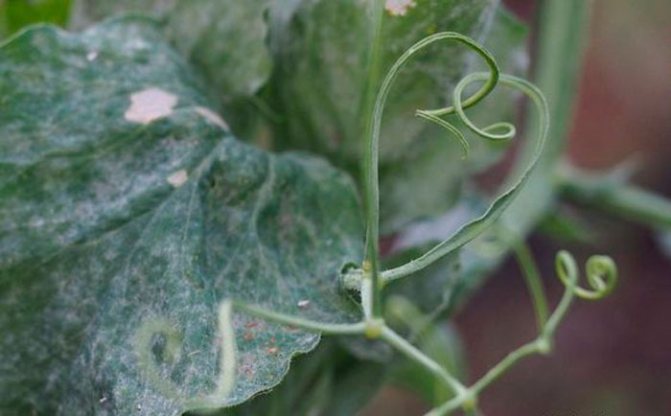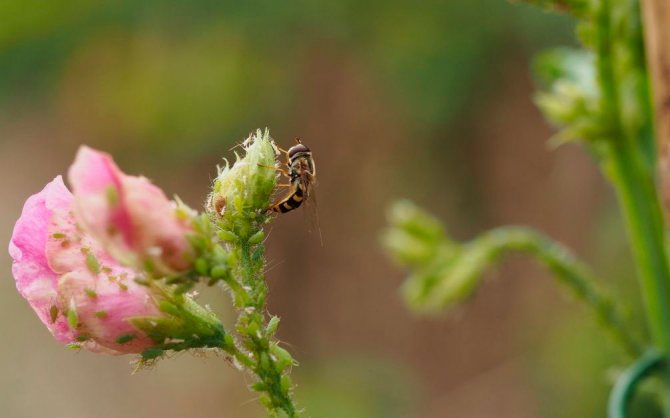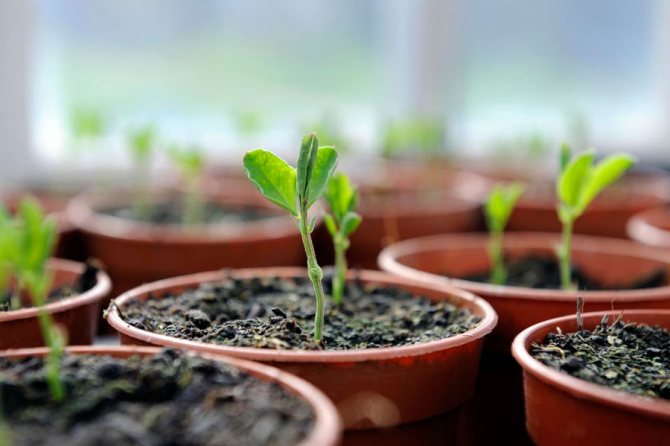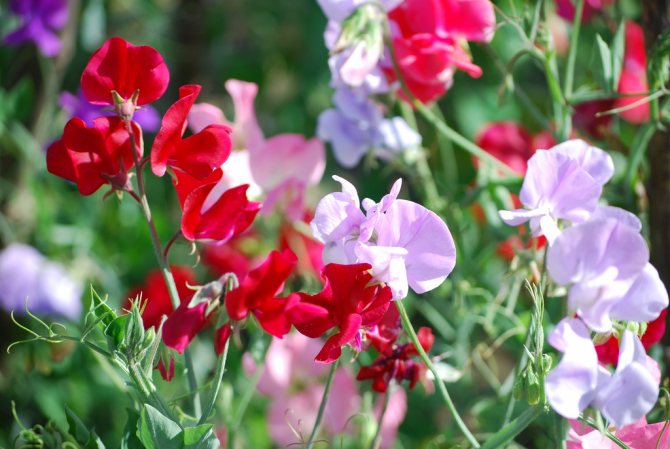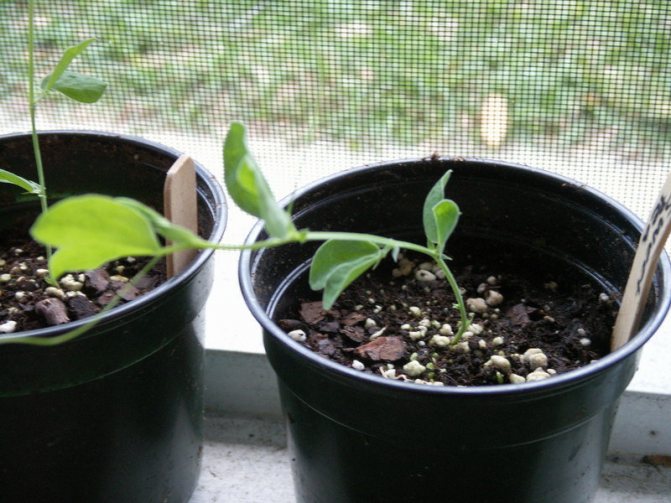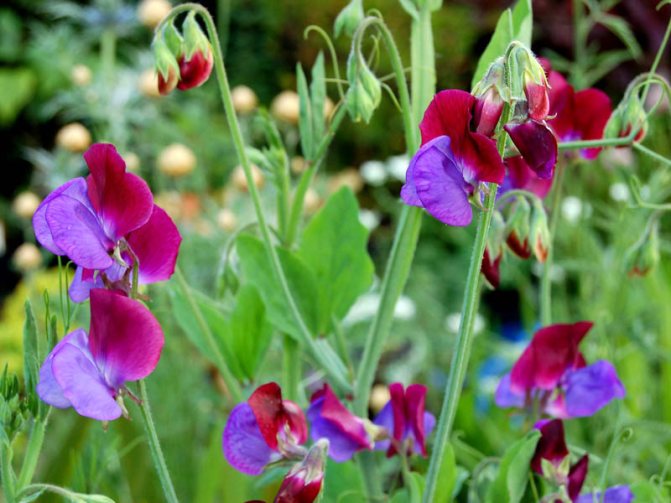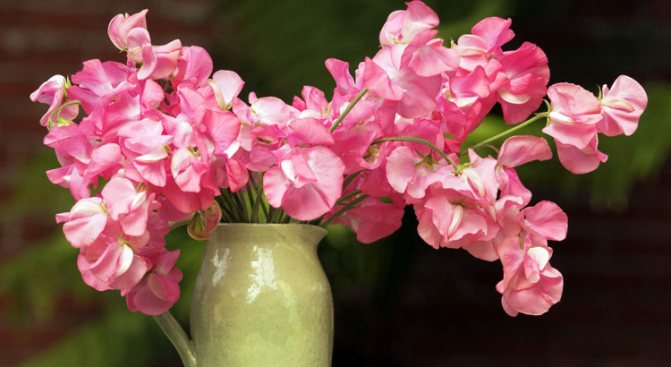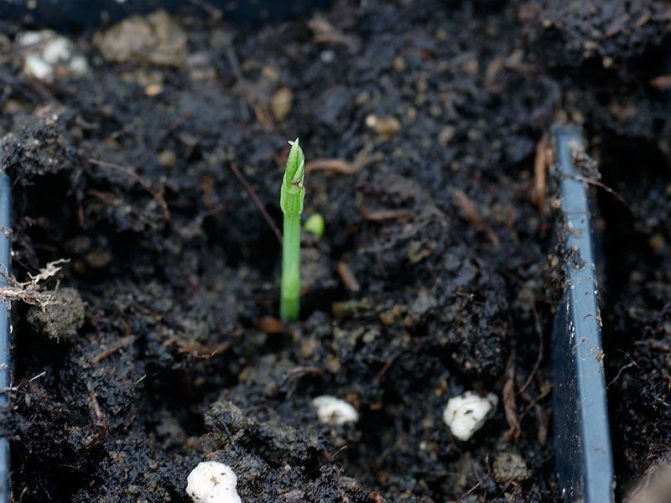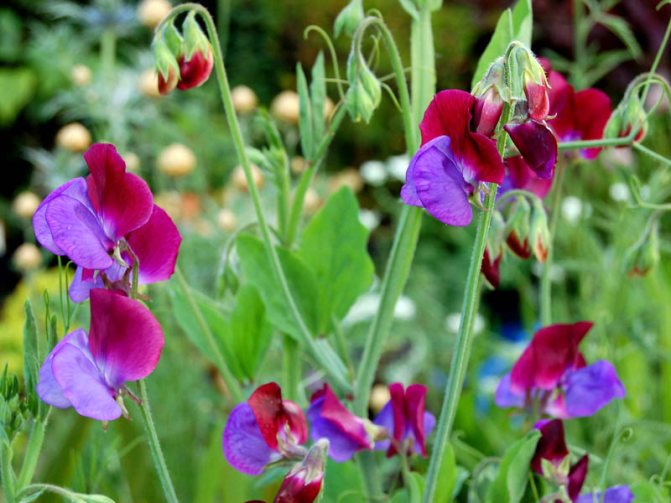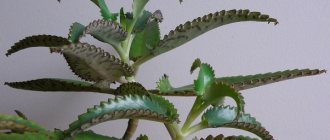Sweet peas: appearance and history of appearance
Lathyrus Odoratus belongs to the genus of the large legume family. This is a herbaceous climbing plant with small, but graceful and abundant, collected in a brush, flowers, which many growers compare in shape to a reduced copy of an orchid. The color of flowers can be varied: from pale blue to deep blue and purple and from white and pale pink to red and burgundy.
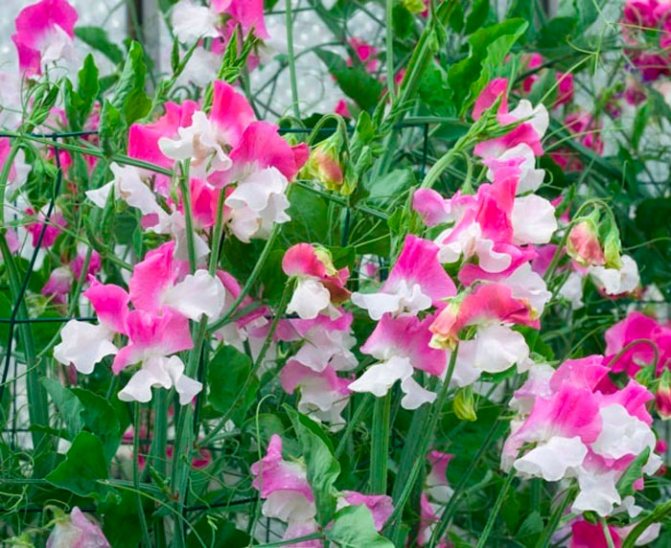
Sweet peas are able to decorate any area
For your information! Currently, bicolor varieties have also been developed, which are becoming more and more popular.
Pea is a perennial, although in certain climatic conditions this fragrant flower is grown as an annual. In addition, thanks to the painstaking work of breeders, many annual varieties have appeared, which are presented in a more diverse range of colors.
Fragrant peas begin to bloom in late June - early July, but the duration of their flowering depends on how they are taken care of. If you follow some simple rules, the plant will delight you with numerous flowers until the very frost.
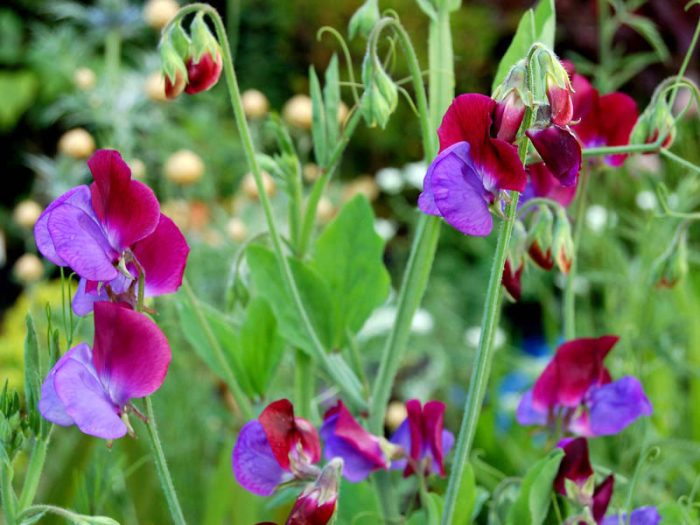

Currently, bicolor pea varieties have been developed
The stems of the peas (ranks) are ribbed, the leaves are complex pinnate of a bright green color. At the ends of the leaves are antennae, thanks to which the plant can curl, clinging to the support. The height of this fragrant plant depends on what variety it is, and can vary from 15-20 cm to 2-2.5 m. The fruits of the ranch are pubescent, not very long beans with several seeds.
It is believed that the birthplace of sweet peas is Sicily. It was from there that he was brought first to India, and only then to Europe. Today, ornamental peas as a garden plant are especially revered in England, where even whole communities of its lovers have been created. Long-term sweet peas have become a kind of symbol of garden design here.
Important! Sweet pea seeds are poisonous, so it is better to keep them away from children and animals.
Fragrant rank and folk medicine
The healing properties of annuals are not fully understood. Traditional medicine has been using it for a long time. It strengthens the immune system, helps with colds, vitamin deficiency. For insomnia, for diseases of the cardiovascular system and the gastrointestinal tract, a decoction of pea tubers is prepared. Tincture of the plant treats respiratory ailments. It has a good expectorant effect.
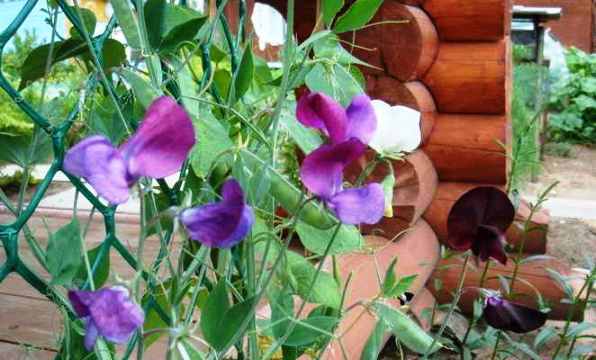

Conclusion
Sweet pea is an easy-care and beautiful plant. It is very popular with experienced gardeners. The flower is annual, not capricious. Everyone can grow it, despite the number of recommendations. The beauty and tenderness of flowers, a pleasant aroma will cheer you up and ease any pain. Sweet pea plant is sure to please you!
Sweet pea varieties
Fragrant tobacco - growing a flower from seed
Perennial grades of rank are not particularly varied in color: more often it is a purple or pink hue. Such peas can grow up to 2 m, while clinging with its antennae to all objects that meet in its path. These varieties must be tied up, since lodging of the stems can provoke their decay and the development of various diseases.
Annual peas are simply replete with a variety of colors and shades, moreover, they are more fragrant than perennial ones.
All varieties of peas are usually subdivided into groups:
- Spencer. The varieties are vigorous with powerful stems and peduncles, the upper edges of the petals are wavy;
- Kazberston. The shoots are long, with numerous flowers, thanks to which the plants of this group are simply adorable when cut;
- Royal. This group includes early flowering varieties, in which large flowers with upper petals, colored either in lighter, delicate, or, conversely, more saturated, shades;
- Bijou. These are low-growing (about 25-30 cm) plants with large and bright inflorescences. Abundant flowering;
- Pink Cupid. The varieties of this group have a common characteristic feature - the upper petal has a wavy edge. Plants are low (up to 30 cm);
- Fantasy. This group is distinguished by dwarf growth (no more than 20 cm), due to which it is used as a ground cover and as bordering borders.
Timing for landing
When to plant annual sweet peas depends on the climatic conditions in your area as well as the type of plant. Different types have different frost resistance
.
The very moment of disembarkation should not be postponed. The growing season for this flower is long - about two to three months. Therefore, the sooner you plant sweet peas, the sooner they will delight you with abundant flowering and a unique aroma.
In conditions mild climate of subtropics
you can plant the plant in the ground in November. IN moderate
In climates, it is best to plant sweet peas in early spring.
In conditions harsh Russian winters
planting dates are shifted to February. Only you need to plant not in open ground, but in the form of seedlings. After the snow melts, the seedlings should be planted in a permanent place. In open ground, seeds are sown in late April and early May.
The use of ranks in landscape design
Zinnia - growing from seeds at home
Due to its ability to curl and bloom for quite a long time, the rank is most often used for vertical gardening. The most suitable places for her to disembark are:
- walls that need to be given a more picturesque look;
- fences and hedges that the colored peas will turn into living ones;
- the perimeter of the gazebos, which it is desirable to shade;
- supports (nets, lattices), which makes it possible to get a blooming green wall.
Low-growing varieties fit perfectly into the landscape when planted along curbs, in flower beds, and in single cut plantings they are very good.
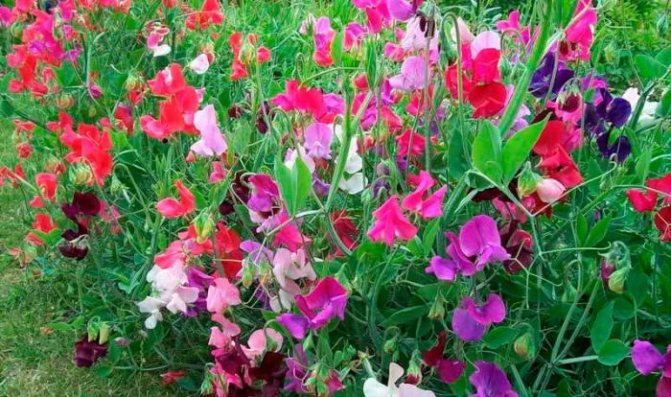

Mass plantings of peas of different colors look especially bright.
Planting methods
Sweet peas are a decoration of any flower bed and flower bed. Its peculiarity is that it pleases with flowering even when other plants are languishing in the summer heat. Sweet pea inflorescences last for more than five months, and the variety of their shades creates a multi-colored waterfall on the flower bed. In the evening, before a thunderstorm, the extraordinary aroma of the plant will not leave anyone indifferent. The flower is also popular for the reason that it feels great both in the sun and in the shade, it is easy to shape and is an excellent arched plant that twists on any support.
There are several ways to plant sweet pea seeds:
- before winter (after the first frost);
- spring sowing;
- into closed soil.
Which of the ways to choose, everyone decides for himself, but it is best to try each of them and give preference to the one that will provide a beautiful and rich flowering.
Features of planting and care
Lavender - growing from seeds at home
Cultivation of ranks occurs either by seedlings or by sowing seeds directly into open ground.Moreover, they can be sown both in spring and in autumn, since the seeds are frost-resistant and winter well in the soil, starting to grow with the onset of warmth.
Note! Sowing in the ground makes it possible to get stronger and more viable plants, hardened in natural conditions, which will be much better able to tolerate transplantation. They are more resistant to possible spring temperature fluctuations. Such plants are distinguished by abundant flowering throughout the season.
At the same time, seedlings will give an opportunity to get an earlier flowering. The problem with this method of growing peas is its long root, which does not respond well to transplants, preferring not to be disturbed. In this regard, it is better to plant seeds immediately in separate containers, which minimize injuries during the subsequent transplantation of young plants.
It is best to use peat cups. In this case, planting in the soil is generally painless. If a plastic cup is used, then the plants from it, during transplantation, are carefully transferred into the holes prepared in advance, right with a lump of earth.
Planting seedlings
Seedlings are usually planted in early spring. First of all, the seeds are carefully examined for damaged or diseased seeds, which are removed. Then the seeds should be soaked in a saline solution. It is also better to remove those of them that will appear on the surface, since the likelihood that they will rise is too small.
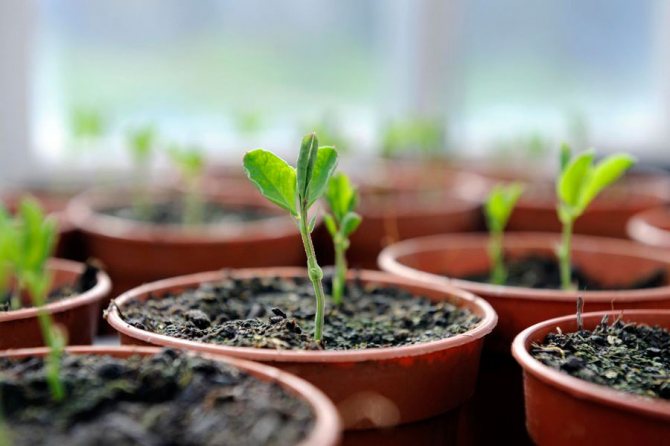

Pea seeds are best planted in separate containers.
Pea seeds germinate rather poorly, so it is better to prepare them for planting: soak for a day either in plain warm water, or in water with the addition of a bud. After that, it is better to place the seeds in wet sawdust, sand or cheesecloth for several days, but always at a temperature of at least 20 ° C. During this time, the seeds should hatch, and they are immediately planted in the substrate. 2-3 seeds should be planted in each container, and they should not be buried more than a couple of millimeters into the soil.
The composition of the substrate must necessarily include peat, turf and humus, and immediately before planting it is thoroughly moistened. The containers with seedlings are covered with foil and placed in a warm and well-lit place.
Important! Before use, the substrate should be disinfected with a strong solution of potassium permanganate.
Seedling care
Approximately 1-2 weeks after sowing, the first shoots will begin to appear. At this time, they need to be opened and transferred to a cooler room. Do not forget to keep the substrate moist. During this period, young sprouts especially need good lighting, therefore, if there is not enough sunlight, additional sources must be used.
In order for the lateral shoots to form well on the plants, experienced gardeners recommend pinching the seedlings as soon as 2-3 pairs of leaves appear on it. After such a procedure, it is advisable to feed the seedlings (usually a kemira solution is advised). It is also very good from this time to start gradually hardening the seedlings, taking them out for a while in the open air.
Planting seedlings in open ground
Approximately in the middle - end of May, when the soil warms up enough and the threat of night frosts disappears, seedlings are planted in open soil. If by this time buds have tied on the shoots, they should be removed, since the plant otherwise will not be able to form a strong root system.
Description of the main stages of care
When choosing a landing site, you should take into account some of the nuances:
- the site should be well lit and warm, but at the same time it should not be located in a draft, since delicate peas do not like this;
- it is necessary to immediately provide for the presence or the possibility of placing a support, if we are talking about tall varieties;
- the soil on the site should be prepared (it should be dug up and fertilized into it), loose and nutritious, it should not contain clay.
2-3 plants are planted in each prepared hole, while the distance between the holes is made at least 25-30 cm.
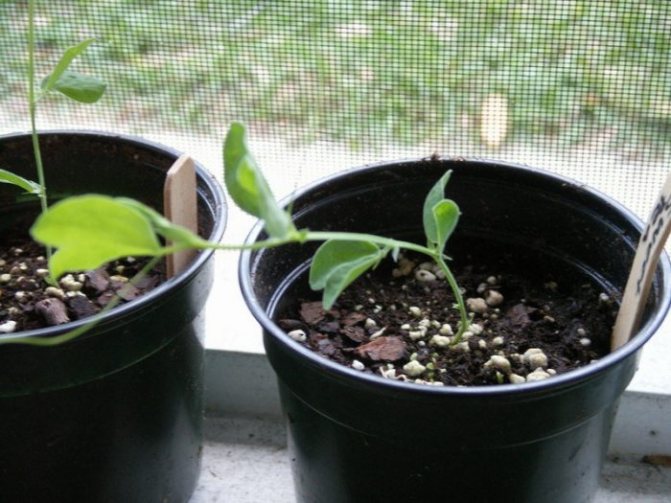

Before planting seedlings in open ground, it is better to remove the buds that have tied up
Watering planted plants should be abundant. The plant needs moisture, so the soil must always be moist, otherwise unblooming buds will begin to fall off.
Note! Fertilization of peas is carried out in order to obtain abundant flowering on the bushes. When carrying out top dressing, it is important to remember that nitrogen is not needed for peas. At the beginning of growth, it is better to use urea and nitrophosphate, and during flowering, fertilizers for flowering plants (for example, Rossu or Agricola).
Peas will throw out their flowers for a long time, if you do not allow him to switch to seed formation. That is why faded inflorescences should be removed in time.
In preparation for winter, perennial varieties of peas are simply cut off at the root and, for the purpose of warming in the case of rather harsh winters, they are sprinkled with sawdust. This will be enough so that next year it will again please with its flowering.
How to plant correctly
Soil preparation
If you decide to grow sweet peas using seedlings, you will need to prepare the soil for planting in advance. To do this, even in the fall, you need to prepare garden land.
It is better to do this before the first frost. Store the excavated soil on a balcony or other cold place throughout the winter.
Mix it with peat seedling soil before planting seeds. After that, it remains to fill the boxes or cups with the resulting soil, water abundantly and put on a warm windowsill. You can start preparing the seeds.
Seed preparation
Experienced gardeners prefer to prepare seeds in several ways:
- the seeds are gently rubbed between layers of sandpaper to loosen their natural shell
- cut the surface of the seed with small scissors to facilitate its emergence
- soak them before planting
To soak the seeds, each variety of sweet peas is placed in a separate container, after which they are poured with hot water. The water temperature should not exceed 60 degrees.
After a day, the water is drained, the seeds are covered with a damp cloth or cotton pad on top. With regular moistening of the napkin, shoots appear in 5-10 days. The seeds can now be planted.
Bedding
Depending on the method of planting the plant, you need to plant either seedlings or germinated seeds in the ground.
The advantage of planting peas seedlings is its early flowering.
When the weather is favorable without frost, the seedlings of sweet peas can be planted in the ground by transshipment. So that the earth does not crumble from the roots of the plant, the seedlings are watered abundantly and the walls of the cup are cut in order to successfully extract the root system along with the earthy clod.
At the landing site, recesses are made at a distance of at least 30 cm from each other. The seedlings are placed in these recesses, covering them with earth and compacting the surface.
When planting sweet pea seeds directly into the ground, they act as follows. After the snow melts, if the ground has warmed up enough, the seeds are sown in 2-3 pieces immediately into the ground.
Depressions of 2-3 cm are made in the ground at a distance of 15-20 cm from each other. Cooked germinated plant seeds are planted in them.
Sweet peas on the balcony
Ampel and dwarf ranks are a great way to decorate a balcony. In addition, even a novice gardener will master this method of growing it, and not only a master of this business.


Currently, a huge number of different varieties of peas of various colors have been bred
Planting seeds for seedlings or directly into pots on the balcony does not differ from planting street varieties of peas. Flowers need warmth, light, and regular watering.
An important point when growing young plants on the balcony is the need to protect them from sudden temperature changes. Polka dots will not fail to show their displeasure by dropping all the buds. In addition, you should not be zealous in a hot season with direct sunlight, since the love of the ranks for good lighting is not unlimited, therefore it is better to shade the plants in the midday heat.
Instructions for obtaining high-quality seedlings
The prepared planting material is laid out in peat pots on compacted soil, after which it is covered with a thin layer of soil mixture. Spill with warm water and add some soil again. Then the peat pots are placed in a plastic container of the appropriate volume and wrapped in cling film. This will maintain the necessary moisture and allow the roots to develop freely. As soon as the seeds give the first visible shoots, it is necessary:
- Transfer the seedlings to a prepared mini-greenhouse with good lighting or boxes covered with polyethylene.
- Make sure that the temperature does not rise above 17 ° C. Otherwise, all growth will go into the stem.
- It is important to regularly monitor and maintain the necessary moisture in the earthen coma. Sweet peas do not tolerate overdrying of the soil.
- As soon as the seedlings reach 10-15 centimeters, the smaller seedlings are removed, leaving one of the strongest.
At the last stage, it is recommended to transfer the seedlings either to a greenhouse or to an open balcony. Lowering the night air temperature is beneficial for the healthy development of seedlings.


Landing in the ground
As soon as the weather is stable outside the window or outside the greenhouse, and the temperature on the ground does not drop below -3 ° C, the seedlings can be transferred to the ground. To do this, you need to find and prepare a place protected from the wind with good lighting throughout the day. The soil should be deeply cultivated and well mineralized. For these purposes, compost, double superphosphate and potash fertilizers are introduced into it in advance with the calculation: 20/15 grams for one square meter.
The transfer of seedlings to the ground is as follows:
- the prepared place is dug deeply again;
- the holes are prepared at a distance of 30 centimeters;
- the remains of a peat pot are carefully removed from the earthen clod;
- the seedlings are buried by 1.5–2 centimeters;
- install props.
At the end of the procedure, the soil is mulched, but without the formation of a pouring crust. After one and a half to two weeks, fertilizing is done with mineral compositions based on nitrogen, phosphorus and potassium.
Possible diseases and the fight against them
Unfortunately, sweet peas are susceptible to some diseases, so measures should be taken when the first symptoms appear.
- Ascochitis. Clear-cut brownish spots begin to appear on the surface of the plant. The bush should be treated several times with an interval of 2-3 weeks with a solution of rogor.
- Viral mosaic. A pattern appears on the surface of the leaves, and the top of the stem is twisted and deformed. This disease is incurable, so the bushes are dug up and burned.
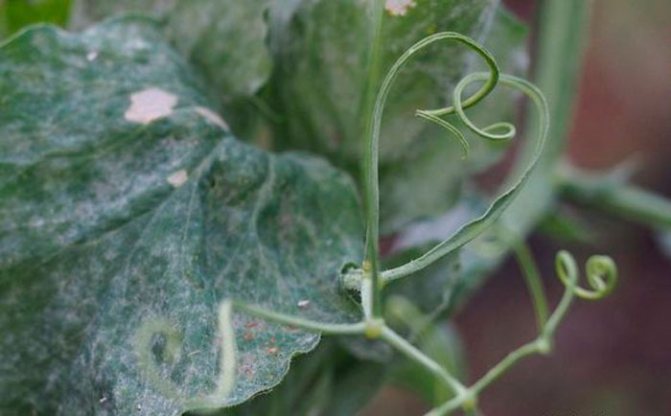

When the first symptoms of the disease appear, measures should be taken
- Root rot. The root collar darkens and the plant dies. The affected bushes are immediately removed and the soil is disinfected.
- Fusarium. The leaves of the affected flowers turn yellow and wither. This disease is considered incurable, so diseased specimens are immediately removed, and the soil and nearby plants are treated for prophylaxis with a TMDT solution.
- Powdery mildew and downy mildew (downy mildew). A whitish coating of a loose structure appears on the surface of leaves and stems. If untreated, the leaves turn yellow and crumble. In the fight against diseases, treatment with colloidal sulfur will help.
The formula for successfully growing sweet peas is quite simple: it should be watered regularly and abundantly, weeded and fed. And it will delight with its long flowering and delicate aroma all summer long.
Top dressing
Sweet peas are fed three times per season:
- Produced when the stems are growing back. Nitrophoska and urea in equal amounts (1 tbsp each) are diluted in 10 liters of warm water.
- It is carried out starting from the appearance of the first flowers. In a bucket with a volume of 10 liters, a tablespoon of potassium sulfate and fertilizer "Agricola - 7" are diluted.
- It is carried out during the flowering period. For this purpose, a tablespoon of Rossa and Agricola for flowering plants is dissolved in 10 liters of water. The mixture is consumed in the amount of 3-4 liters / 1m2.
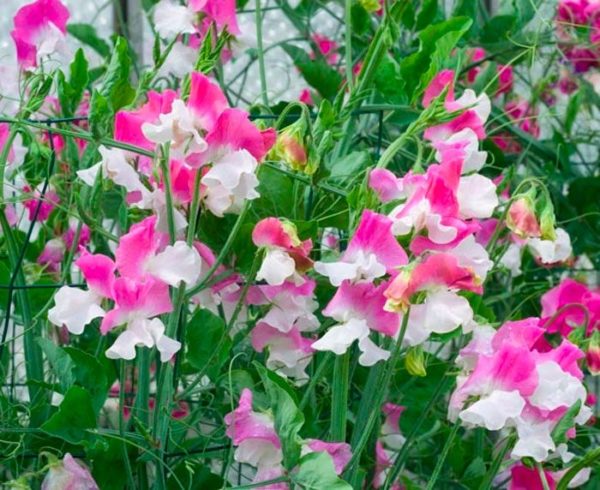

The plant is watered no more than 1 time a week, but there should be a lot of water, 30 liters / m2. The most important thing is to know the "golden mean", not to pour or overdry the peas, he loves abundant watering, but absolutely does not tolerate waterlogging of the soil. During the season, it is recommended to loosen and weed the weeds around the plant at least 3-4 times.


You may be interested in:
Growing fragrant tobacco from seeds Despite the rather provocative name of this plant, we are talking about beautiful small flowers, which many ... Read more ...


